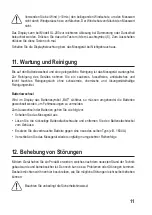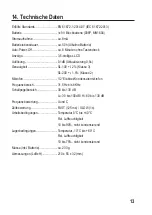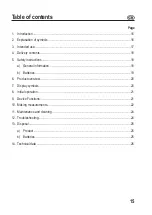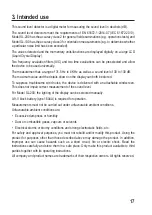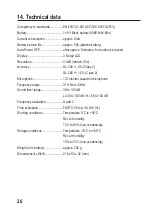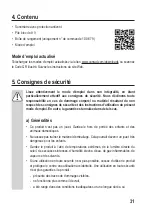
Calibration
This sound level detector complies with the European Standard EN 61672-1:2014-07 (IEC
61672:2013) for sound level meters. To be able to use it in compliance to the standards, the
meter must be calibrated before every measurement using evaluation curve A (dBA) i.e. it must
be checked using an optional sound calibrator and adjusted as required.
Accuracy must once more be checked after each measurement.
To calibrate, proceed as follows:
• Switch the sound level detector on.
• Select the appropriate settings (dBA, Hi or Lo measurement range and FAST time evaluation)
• If required, deactivate the „MAX“ and „HOLD“ functions.
• Plug the microphone of the sound level detector into the opening of the sound calibrator.
Make sure that it sits tightly to ensure that the calibration chamber in the sound calibrator
is sealed.
• Set the following parameters at the sound calibrator: 94 dB at 1 kHz
• The meter should now display a sound level of 94 dBA. If this is not the case then the meter
must be adjusted.
• Open the battery compartment at the rear of the device and remove the battery. Do not
disconnect the battery!
• You can now see two alignment points in the battery compartment.
• Using a suitable screwdriver, carefully turn the adjustor for your measurement range until the
display is set to exactly 94.0 dBA.
A(Lo) = Calibration controller for the Lo measurement range
A(Hi) = Calibration controller for the Hi measurement range
• Carefully re-close the battery compartment.
Making measurements
Sound sources must always be measured directly.
Make sure that there are no objects or persons located between the microphone and
the sound source.
Point the sound level detector and the microphone directly at the sound source.
To ensure that you do not influence the sound waves yourself, stretch the meter out with your
arm as far away from your body as possible or mount the meter onto a stand. There is a fixture
for a stand on the rear of the housing.
Avoid vibration and movement.
23



